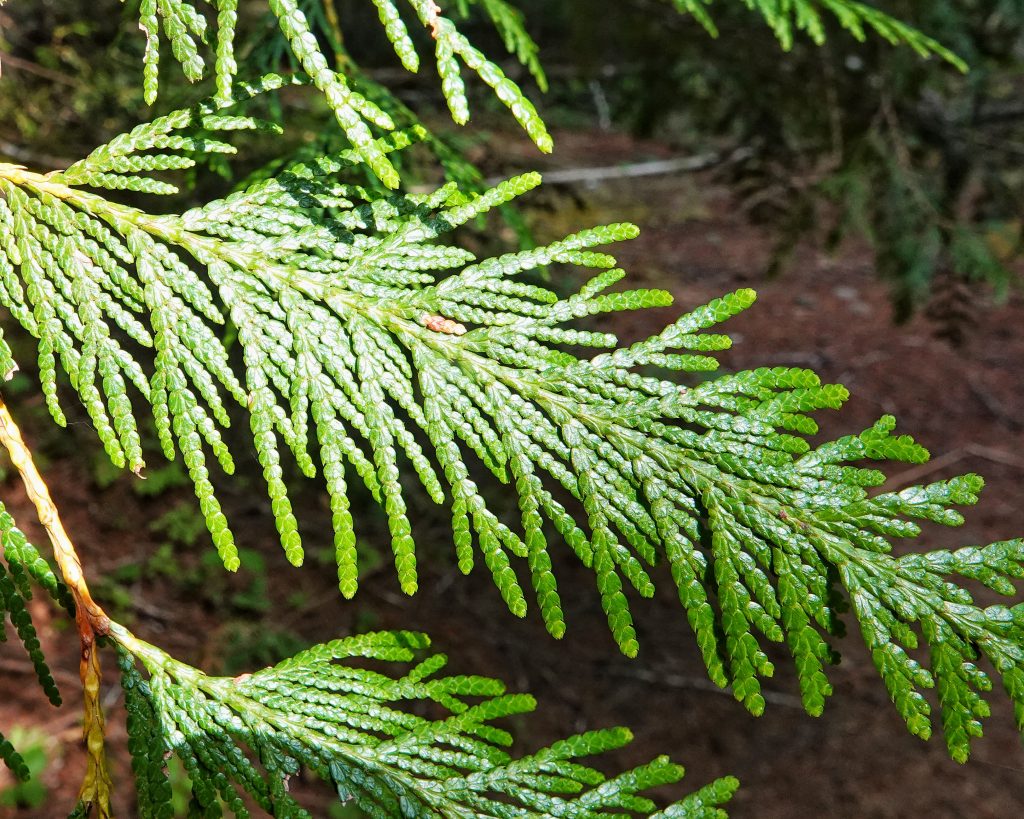
Until last September Thuja plicata (western red-cedar) was the only conifer I could consistently identify, but that was only one of the reasons they were my favorite conifer. Another is that because of the way that the branches channel rain toward their tips, you can always find shelter from soggy weather next to the bole of a good-sized western red-cedar, not to mention the dry twigs and dangling bark that are excellent for starting a fire in wet weather. And then there is their aesthetic beauty, the graceful droop of their branches, and the way they soften the visual texture of a forest.
For those wondering about my absence, or the changes in the way these profiles are done, see my blog “Equinoctial evaluations”.
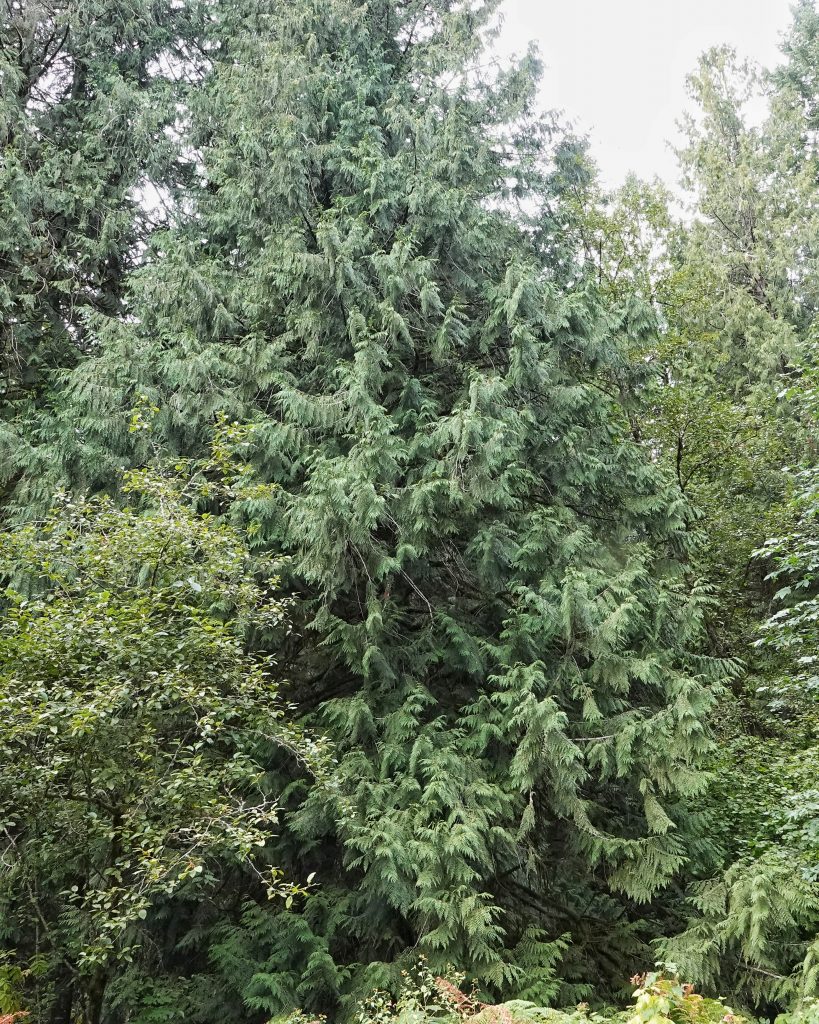
“From Oregon through western Canada, western redcedar (Thuja plicata, WRC) has been dying in areas where it should be thriving, such as along streams and within closed canopies. The cause for this sometimes sudden and expanding dieback is currently unknown…The predominant theory for sudden mortality is that trees may be impacted by a changing climate, including increasing average temperatures and drought stress in the form of reduced and inconsistent precipitation. Even shaded sites along streams are at risk due to higher than usual average temperatures and reduced stream flow. Western redcedar is a species more sensitive to slight changes in abiotic conditions and may be crossing the lower limits of where they can thrive in some areas.” “Western redcedar dieback monitoring in the Pacific Northwest – Help Wanted”, blog at Oregon State University. For more detailed information on this see the ‘Western redcedar dieback’ page put out by USFS, Oregon Department of Forestry, and Washington State Department of Natural Resources; and the ‘Western Redcedar Dieback’ page by Washington State University.
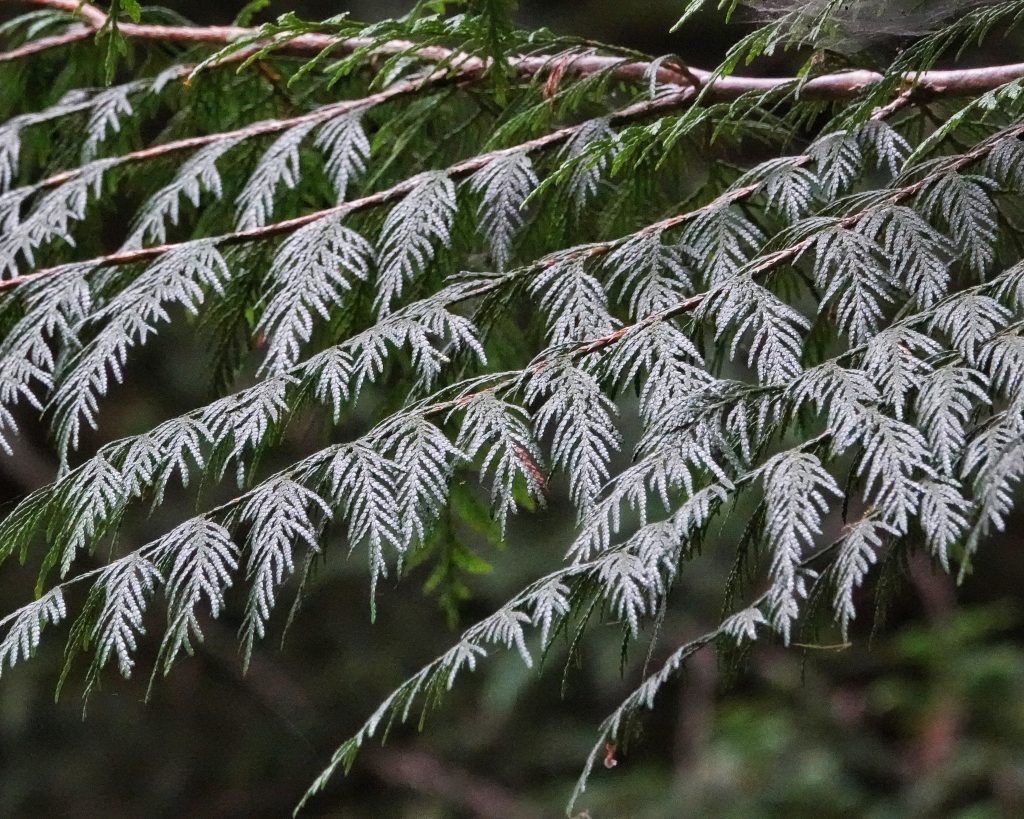
Ethnobotany – “Material Uses: Western redcedar is a very valuable plant for its cultural and commercial value. The wood is resistant to decay and makes an excellent material to make shingles, siding, furniture, fence poles, canoes and boats, and wood pulp/chips. Native American tribes have relied on this plant heavily, often calling it the “tree of life”. Northwest coastal tribes have used the wood for shelters, canoes, and firewood. Canoe bailers are made of cedar bark lashed with wild cherry bark. The charcoal of cedar wood mixed with salmon eggs is used to blacken canoe paddles. The Quileute make the hearth of fire drills out of cedar. The Squaxin make the herring rake of cedar. Bella Coola and Chehalis have used a coarser grade of the bark to weave into skirts and capes, and later into complete dresses. Shredded bark is used for ceremonial head bands and for playing slahalem. Broad, un-shredded layers of bark have been used as dishes and as cooking pit liners by the Cowlitz. Narrow strips are woven into mats by the Makah. The limbs of the cedar tree are stripped of leaves, soaked, and twisted into ropes. These are remarkably strong and were used by the Quinault, Quileute, and Makah for towing home harvested whales after hunting. Cedar limbs, bark and roots have been used for weaving baskets by the Quinault, Squaxin, Haisla, Gitksan, Flathead, and Clallam. The natural plant extracts of the leaves are fragrant and powerful. They are extracted and used in perfumes, insecticides, soaps, and shoe polishes. The extracts are even used in the process of refining lead. The wood is used inside of closets to repel moths and spare clothes from insect pests. It is also an important plant for landscape use and the leaves are used as a floral crop for foliage. Medicinal Uses: The Lummi have chewed the bud for sore lungs, the Cowlitz chewed them for toothaches, and the Skokomish boiled them for a gargle. The Skagit boiled the ends of the leaves for coughs. The Chehalis peeled the bark of a small tree, and the inner part is chewed or boiled and the liquid drunk to bring about menstruation. The leaves and limbs were used to scour the body in bathing. Interesting Facts: The tree is thought to have spiritual qualities, whalers have placed the branches under their bed for good luck. There is also a strong association with this tree and death– Lummi men, when burying a corpse, chew cedar tips to avoid nausea. Cedar limbs, singed, have been used by the Lummi as a broom to sweep off the walls of a house after the removal of a corpse. The Skagit have burned cedar limbs at night and waved them through the house to scare the ghost after death.” Washington Native Plant Society website treatment of Thuja plicata. For more on the human associations with this species, see the 368 entries on the Native American Ethnobotany Database, or the western red-cedar entry by Frank Lang in the Oregon Encyclopedia
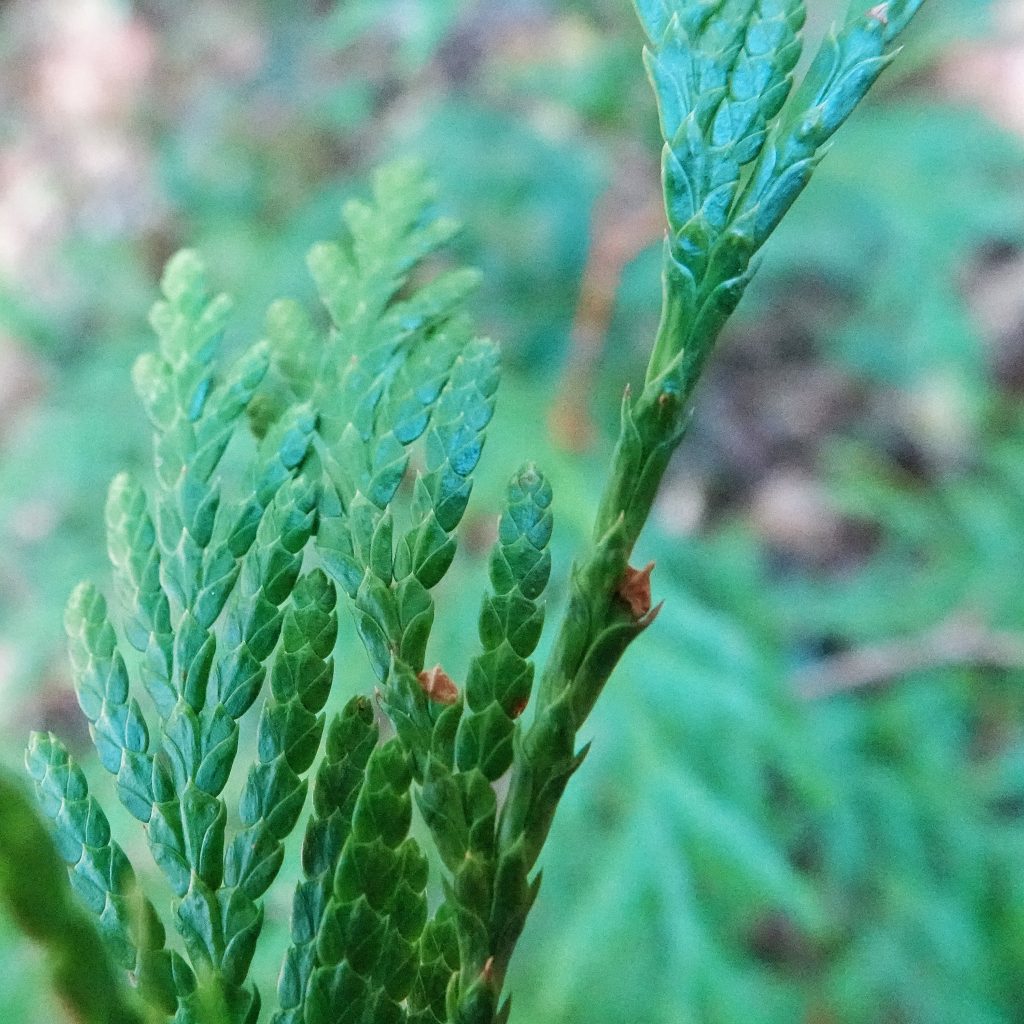
Description– “Western redcedar is a large, native, long lived, evergreen tree. At maturity it is generally 70 to 100 feet (21-30 m) tall, sometimes 130 feet (40 m), with a tapering trunk 2 to 4 feet (0.6-1.2 m) in diameter, sometimes 6 feet (1.8 m) or more. On some sites west of the Cascades, old-growth western redcedar often attains basal diameters of 8 to 10 feet (2.4-3 m) and heights of 200 feet (61m). The largest known western redcedars are believed to be 1,000 yearsold or more. Western redcedar has a swollen or buttressed base, pointed conical crown, and horizontal branches curving upward at the tips. The leaves are scalelike, flattened and 0.05 to 0.1 inches (1.5-3 mm) long. The twigs are flattened, in fanlike sprays and slightly drooping. The bark is thin, fibrous and stringy or shreddy. Thickness varies from 0.5 to 1 inch (1.3-2.5 cm). The cones are clustered near the ends of twigs and become turned up on short stalks. Western redcedar retains its lower limbs except when in densely crowded stands. Western redcedar roots are extensive. Tap roots are poorly defined or nonexistent, but fine roots develop a profuse, dense network. Root systems tend to be shallower and less extensive on wet soils than on deep, moderately dry soils. When a thick duff layer is present, many western redcedar roots lie in the duff rather than in the underlying soil.” Thuja plicata entry on the Forest Service’s FEIS website. This site has probably the best and most complete information on the ecology of this species.
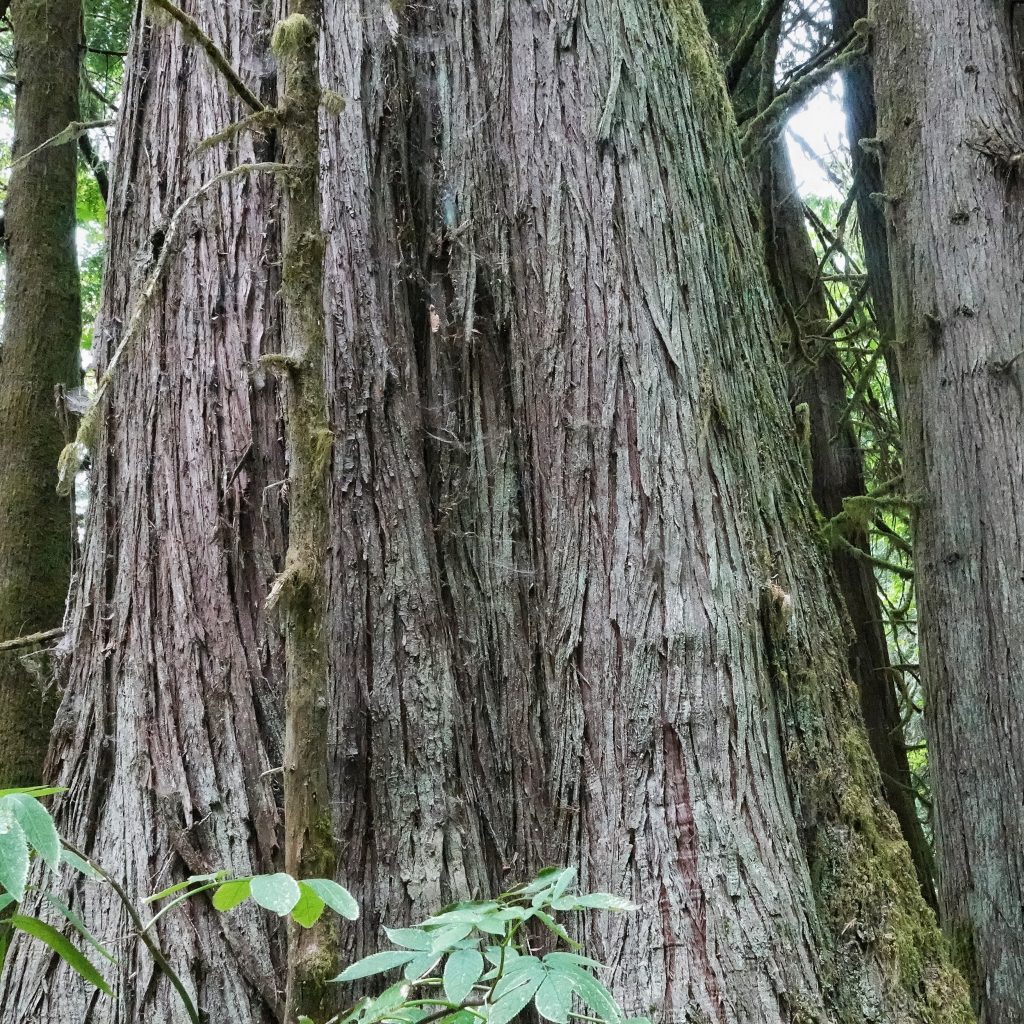
Similar species– Port Orford-cedar (Chamaecyparis lawsoniana) has stomatal bloom in the form of an X on the underside of the leaves, rather than the butterfly shape of Thuja plicata; Calocedrus decurrens (incense-cedar) has long (1/4-1/2”), scale-like outer leaves that form a wineglass pattern and give a long, thin, sparse, rounded appearance to the branchlets; Callitropsis nootkatensis (Alaska-cedar) lacks stomatal bloom on the leaves and has round cones with points on them; junipers and cypress in our region have round to 4 sided groupings of leaves about the stem.
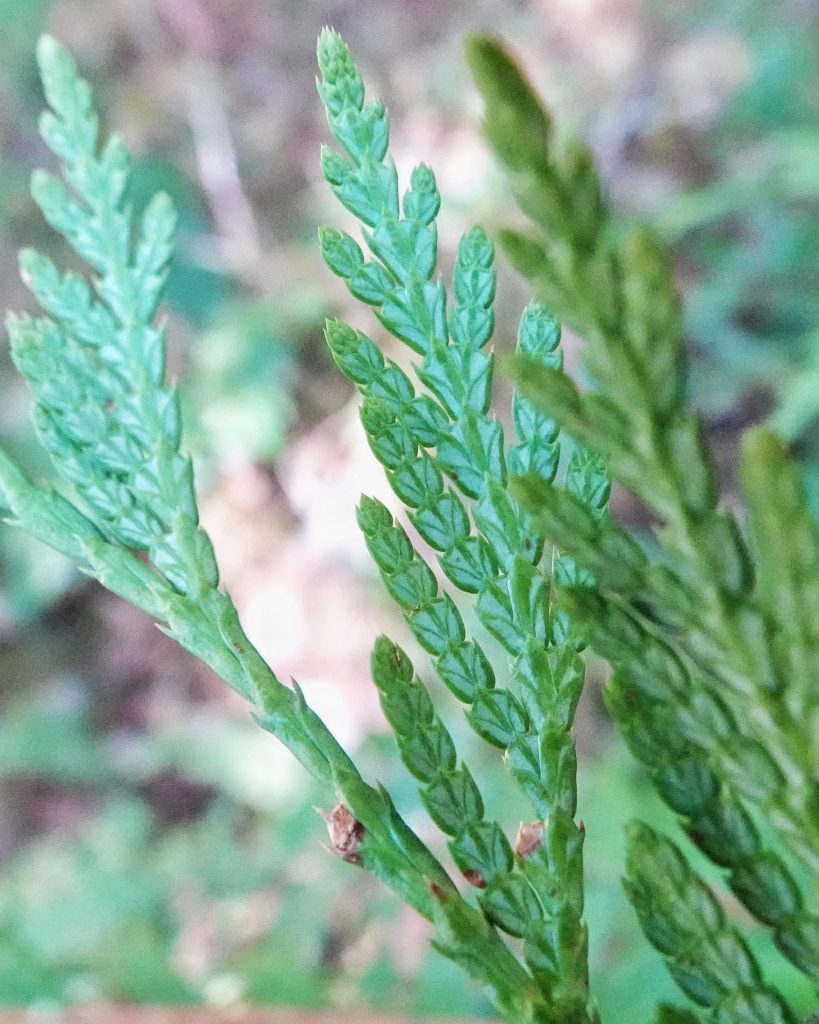
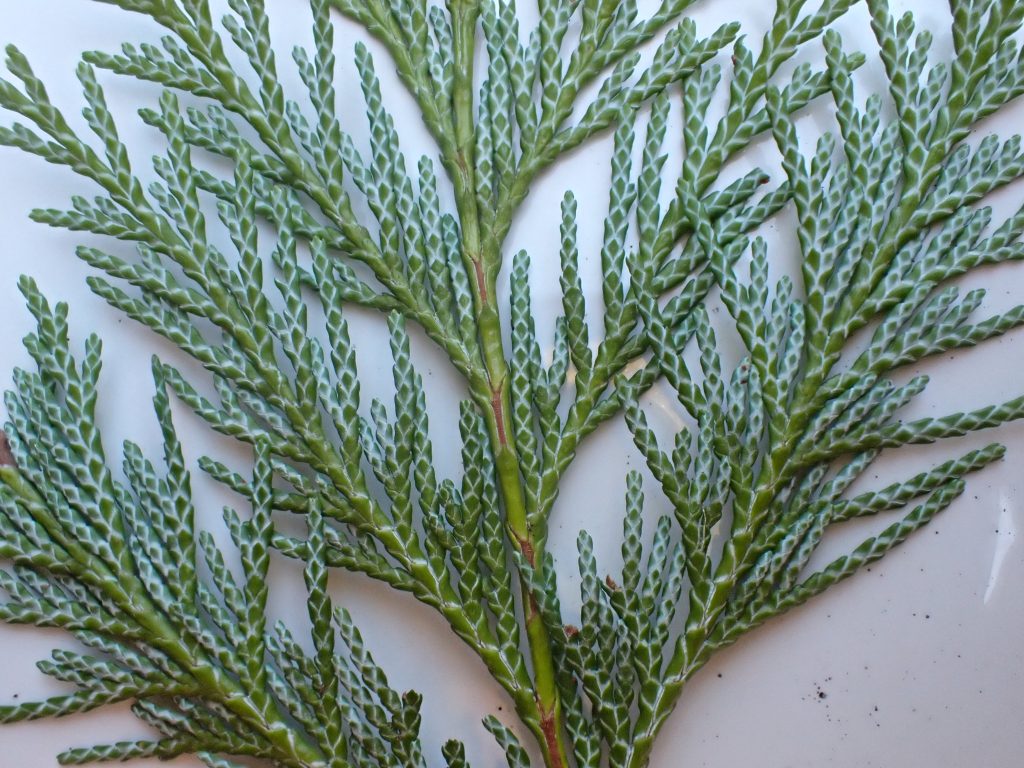
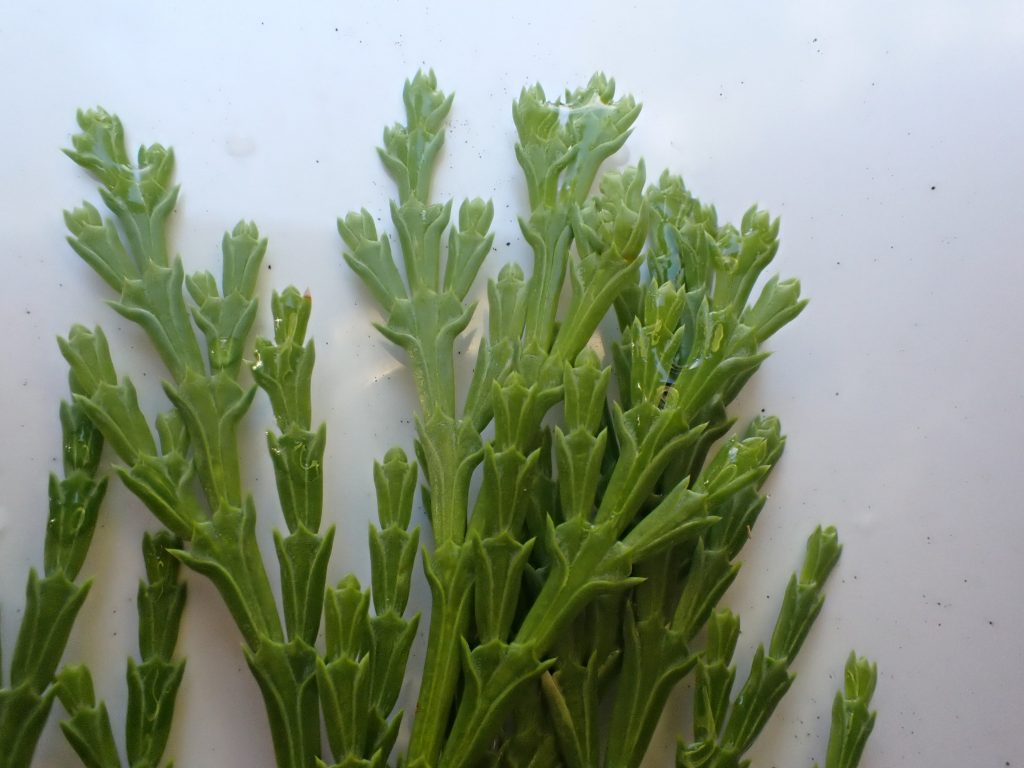
Habitat– Moist to mesic conifer forests with maritime weather influences up to 5500’ elevation; tolerates both wetter and drier ground conditions than most of our other native conifers; very shade tolerant.
Range-Native to the PNW, with coastal and inland population belts; scattered populations found near the n California/s Oregon coast, then found from the Pacific to the east slope of the Cascades in the rest of Oregon and all of Washington, becoming strictly coastal again north of Vancouver Island; inland populations are primarily in the Selkirk and western slopes of the Rockies from roughly 46⁰N to 55⁰N; scattered, disjunct populations in good habitat in central Washington and BC, although many of those may be volunteers from ornamental plantings.
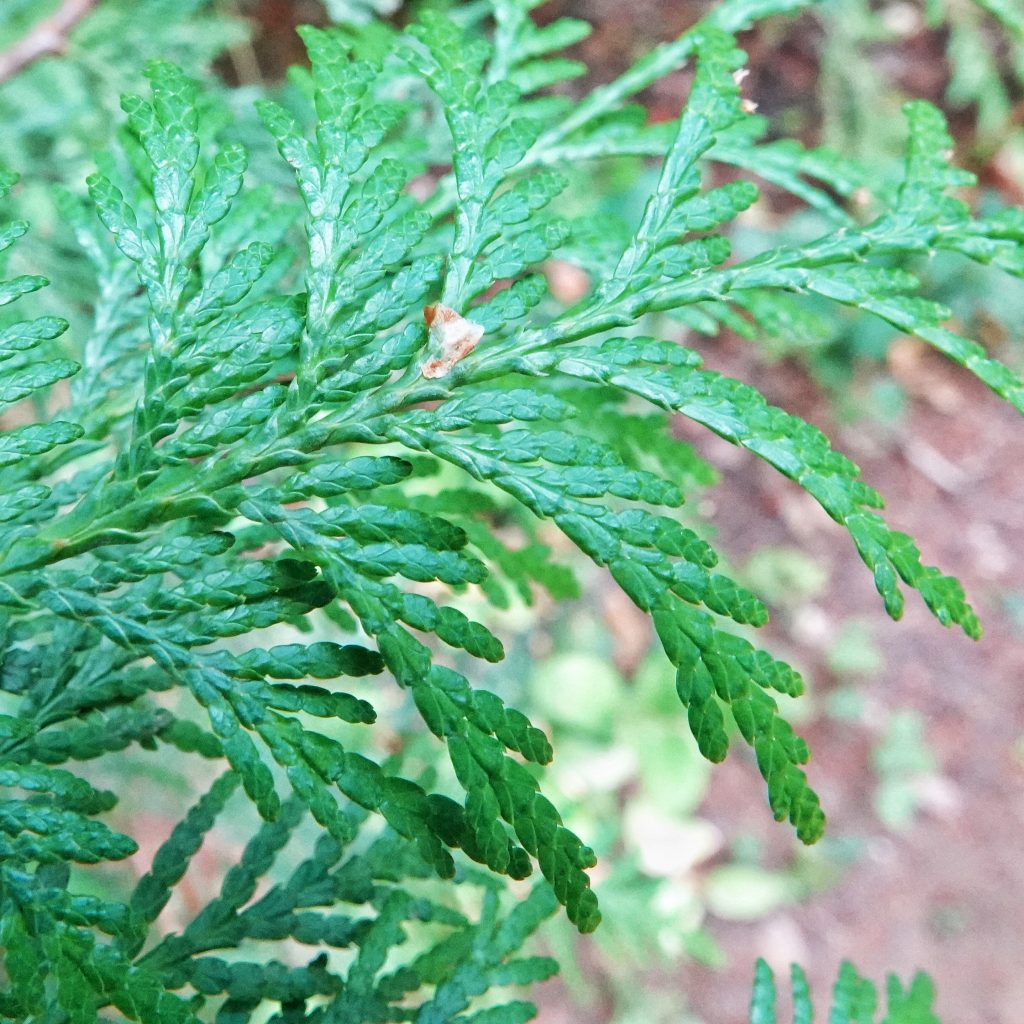
Eaten by– “Birds: Many birds will use the tall branches or cavities from fallen branches to make nests in. Birds that eat the winged seeds include grosbeaks, sparrows, waxwings, nuthatches, and siskins. The dense foliage provides important shelter and nest sites for birds such as juncos, jays, and warblers. Mammals: Saplings provide a major food source for deer and elk during the fall, winter, and early spring. Mature tree stands provide shelter for many animals. In the empty cavities or old trunks, den dwelling animals like bears, skunks, and raccoons will take up residence. Tree squirrels and porcupines use the fibrous bark strips for nesting material.” Washington Native Plant Society website treatment of Thuja plicata; larval host for the Western pine elfin and Nelson’s hairstreak butterflies, and the moths Lophocampa argentata, Anavitrinella pampinaria, Campaea perlata, Caripeta divisata, Enypia packardata, E. venata, Epirrita autumnata, Eupithecia annulata, E. intricata, E. longipalpata, E. maestosa, E. placidata, E. sabulosata, Gabriola dyari, Hydriomena irata, H. renunciata, Lambdina fiscellaria, Neoalcis californiaria, Nepytia umbrosaria, Pero mizon, Tetracis pallulata, Malacosoma californica, Orgyia antiqua, Abagrotis glenni, Idia aemula, Orthosia hibisci, Phlogophora periculosa, Syngrapha alias, Spiramater lutra, Xestia mustelina, Argyrotaenia dorsalana, A. franciscana, Cydia cupressana, Ditula angustiorana, Epinotia radicana, E. subviridis, and Epiphyas postvittana; adults and larvae of the introduced shield bug Cyphostethus tristriatus; dead and dying trees used as larval hosts by the longhorn beetles Atimia dorsalis, Clytus canadensis, Dorcasina matthewsii, Eburilla sericea, Navomorpha stictica, N. sulcata, Phymatodes nitidus, Plectrura spinicauda, Prionoplus reticularis, Semanotus amethystinus, S. amplus, S. basalis, S. japonicus, S. laurasii, Stenopotes pallidus, Trichoferus campestris, and Xestoleptura crassipes
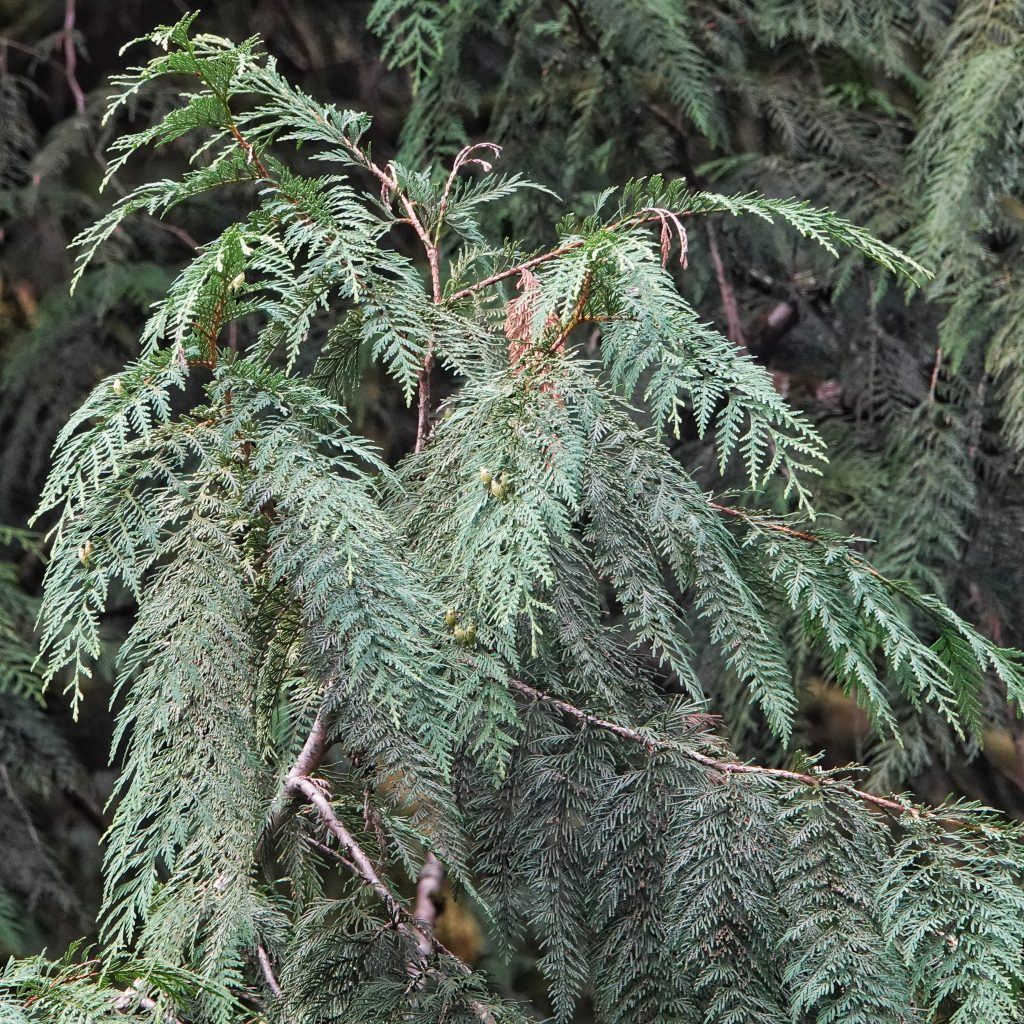
Reproductive timing– “Flowering and Fruiting- When grown in the open, western redcedars begin to produce strobili at 10 years of age and usually every other year thereafter. Strobilus development can be artificially induced at younger ages and increased in mature trees by girdling or treating with gibberellin (8). The species is monoecious; male and female strobili are produced on different branches of the same tree, at different heights-the reddish male strobili on lower branches and the green female strobili nearer the treetops and farther from the trunk (38,52). Anthesis and pollination occur during March and April in southern stands near the coast. They occur during May and June in coastal Alaska and interior stands (47). Seed Production and Dissemination- Each mature strobilus usually produces only 3 to 6 seeds (8), but the strobili are often numerous and heavy seed crops are common. In dry years, conebearing stands in the interior tend to be on high, moist sites (14). Average annual seed crops vary from 247,000 to 2,470,000 seeds per hectare (100,000 to 1 million/acre) in coastal forests and from 54,000 to 274,000/ha (22,000 to 111,000/acre) in the interior. Major seedfall occurs during October and November in both ranges (2). Gibberellin-treated, containerized seed orchards should permit efficient management of seed production and harvesting (8). Seeds are small- 448,000 to 1,305,000/kg (203,000 to 592,000/1b) (47). They fall faster and do not fly as far as the seeds of western hemlock, Sitka spruce, and Douglas-fir, but dissemination is adequate within 100 m (330 ft) of a seed source (4,30). The seeds usually germinate well without stratification, and they retain their initial viability for at least 7 years when stored dry (5 to 8 percent moisture) at -18° C (0° F) (8). Germination is epigeal.” Don Minore; Western Red-Cedar treatment in Silvics of North America, Vol 1- Conifers
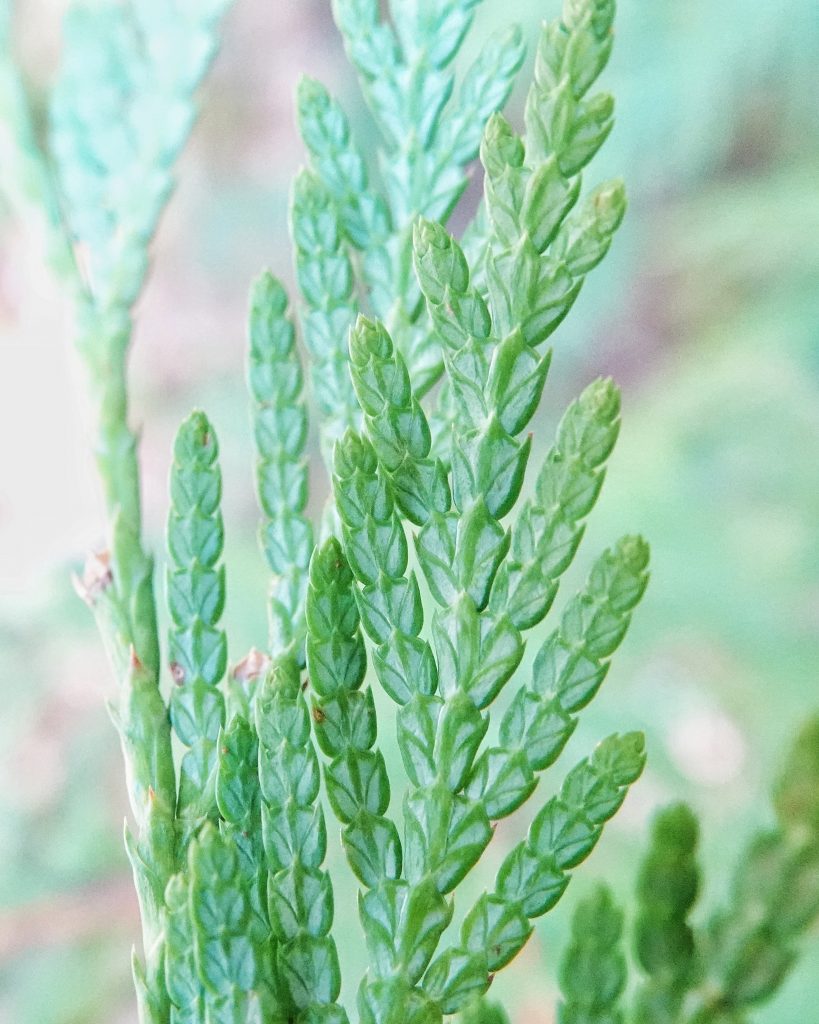
Etymology of names– Thuja is from a Greek word for a tree with fragrant wood; the specific epithet plicata is from the Latin word for folded, and refers to the appearance of the leaves.
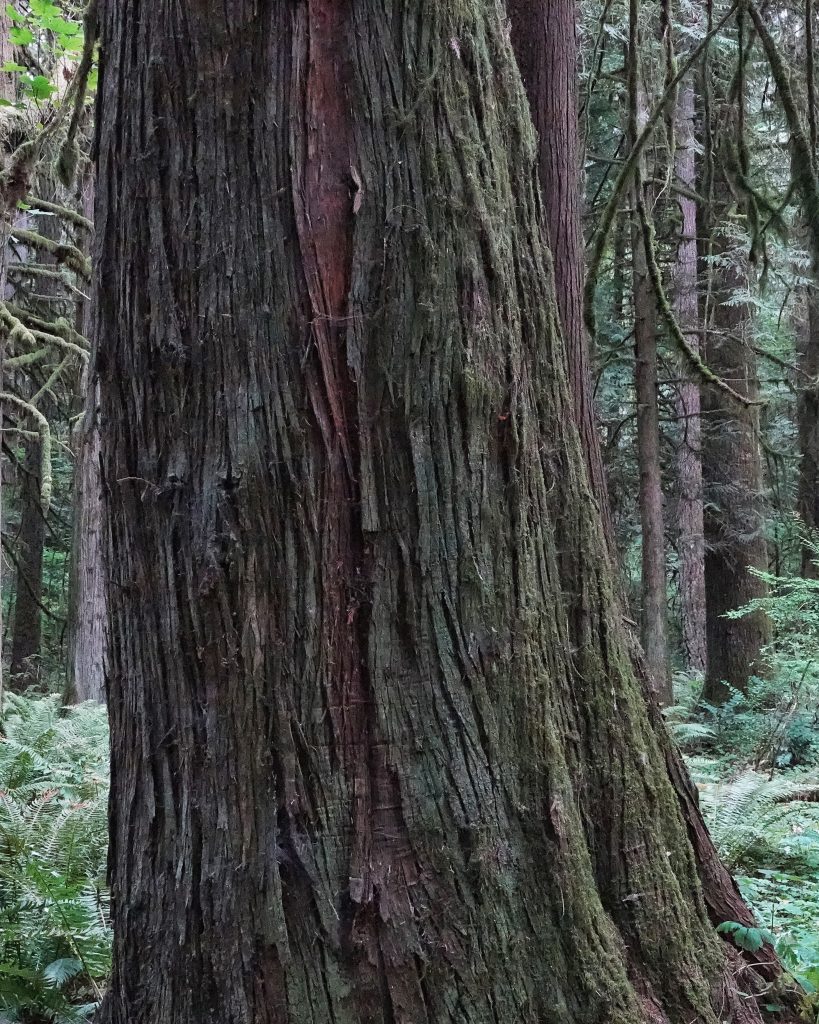
BRIT – Native American Ethnobotany Database
Western Red Cedar, Thuja plicata | Native Plants PNW
Thuja plicata (western redcedar) description
https://www.indefenseofplants.com/blog/2018/9/25/the-only-true-cedars
Western Redcedar Dieback | PPO Home | Washington State University

I boggles my mind that a tree that can be keyed out by a gut reaction (OMG, that’s a HUGE tree!!!!) can have such a shallow root system. There’s a lot about trees that boggles my mind, but this is toward the top.
I completely agree, Kat!
Oh! My very favorite tree! So nice to see it in the spotlight.
It’s a beauty alright!
Another possible cause of dieback in urban areas is disruption of the water table and water flow patterns, as a result of housing developments and roads/parking lots.
That’s good information, Sharon. Thanks!